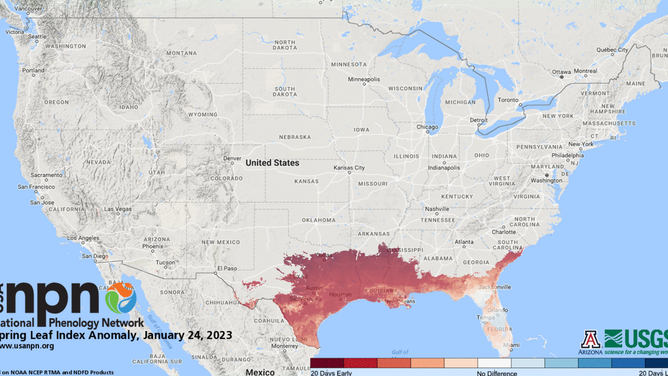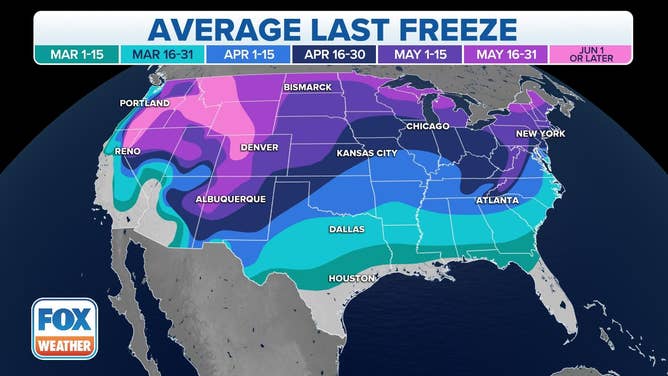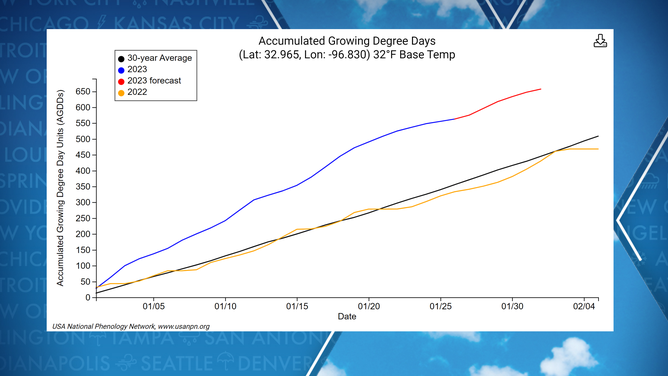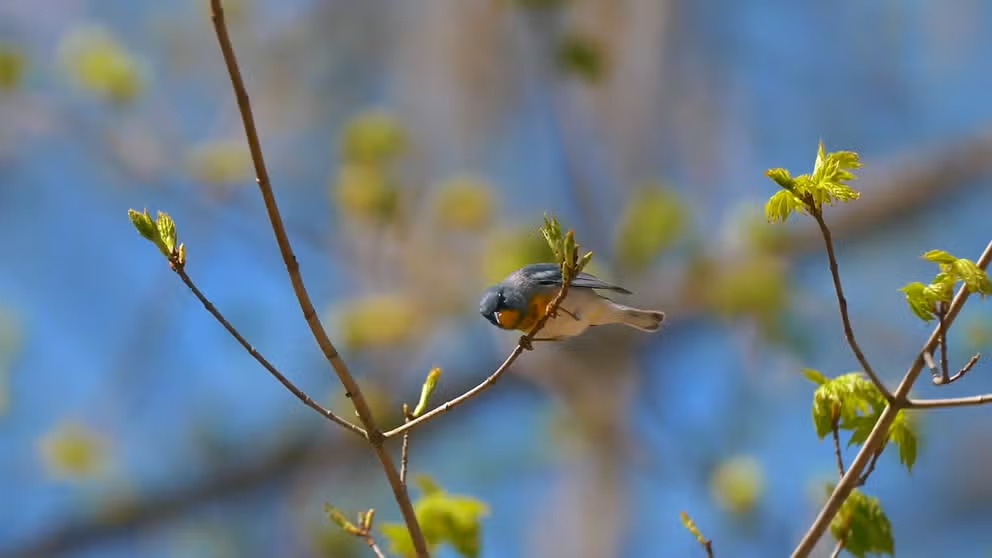Track the progress of spring through leaf production
The USA National Phenology Network reports the leaf-out process is up to three weeks earlier than average in many parts of the Southeast. Model depictions use data from leaves and first blooms of the cloned lilac cultivar and two cloned honeysuckle cultivars.
Bird Songs of Spring
Day length, sunlight and instinct give the birds their seasonal cue.
Spring is in the air - literally – as the consequences of a warm winter start to show over the Deep South with the sprouting of new leaves for the first time of the year.
Data provided by the USA National Phenology Network shows many communities from Texas to the Carolinas are seeing the initial sprouting of leaves after the dormant winter.
Maps show vegetation in Austin, Texas, is running roughly nine days ahead of schedule and communities such as Jackson, Mississippi and Charleston, South Carolina, are nearly two weeks ahead of the typical leaf-out date.
"The year 2020 was a similar spring, in the sense that the Southeast was pretty ahead of what we would expect, and we’re seeing that again this year," said Erin Posthumus, an outreach Coordinator at USA National Phenology Network.
WHY SEASONAL ALLERGIES ARE BECOMING WORSE?

The southern U.S. is a couple weeks ahead of average as indicated by the red coloring.
(USA National Phenology Network / FOX Weather)
Impacts on plants and crops
Data stems from observations of the first leaves of lilacs and honeysuckles and the amount of growing degrees days weather observation sites report. The National Oceanic and Atmospheric Administration defines a growing day as the accumulation of degrees above a baseline, or in many cases above 32 degrees, which can aide in a plant’s growth.
"These are among the first plants to leave out, which is what our leaf index is measuring, and they’re also among the first to bloom," Posthumus said. "They do correspond to native species that are the shrubs and other plants that would be in the understory of a deciduous forest."
Experts warn a sudden cold snap could be harmful to vegetation, especially in the citrus industry, where flowering blooms are critical to crop production.
Late-season frost and freezes, following a string of warm temperatures, can lead to a loss of crops due to the vegetation's vulnerabilities.

Average last freeze date
(FOX Weather)
An earlier allergy season
Aside from crops, communities where leaf production is ahead of schedule might want to grab a dose of their favorite medication and get ready for the annual allergy season.
Dr. Purvi Parikh, an allergist and immunologist with the Allergy Asthma Network, is not surprised by the early reports of leaves and pollen in the Southeast.
"We’ve been seeing a general trend over the last few decades of pollen seasons getting longer and more potent because of warming. We are finding that they’re starting earlier and earlier, and there is a much higher pollen count because of rising carbon dioxide levels," Parikh said.
ACHOO! HOW YOU CAN MANAGE SNEEZING, ITCHY EYES AND OTHER FALL ALLERGY SYMPTOMS
Based at the University of Arizona, the USA National Phenology Network says it is always looking for volunteers to submit observations to help further data models. To take part in the Nature’s Notebook program, click here.
The network has also made it easy to determine how your community is warming up compared to previous years. Users can search data by zip codes to determine how far ahead or behind the growing season is compared to normal.

Example data for Dallas of growing degree day accumulations.
(The USA National Phenology Network / FOX Weather)
